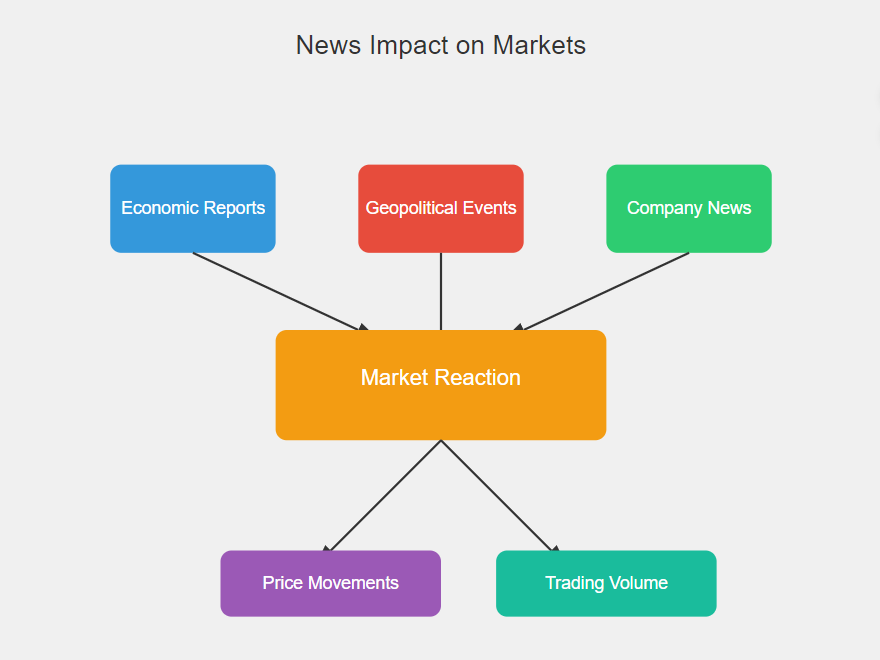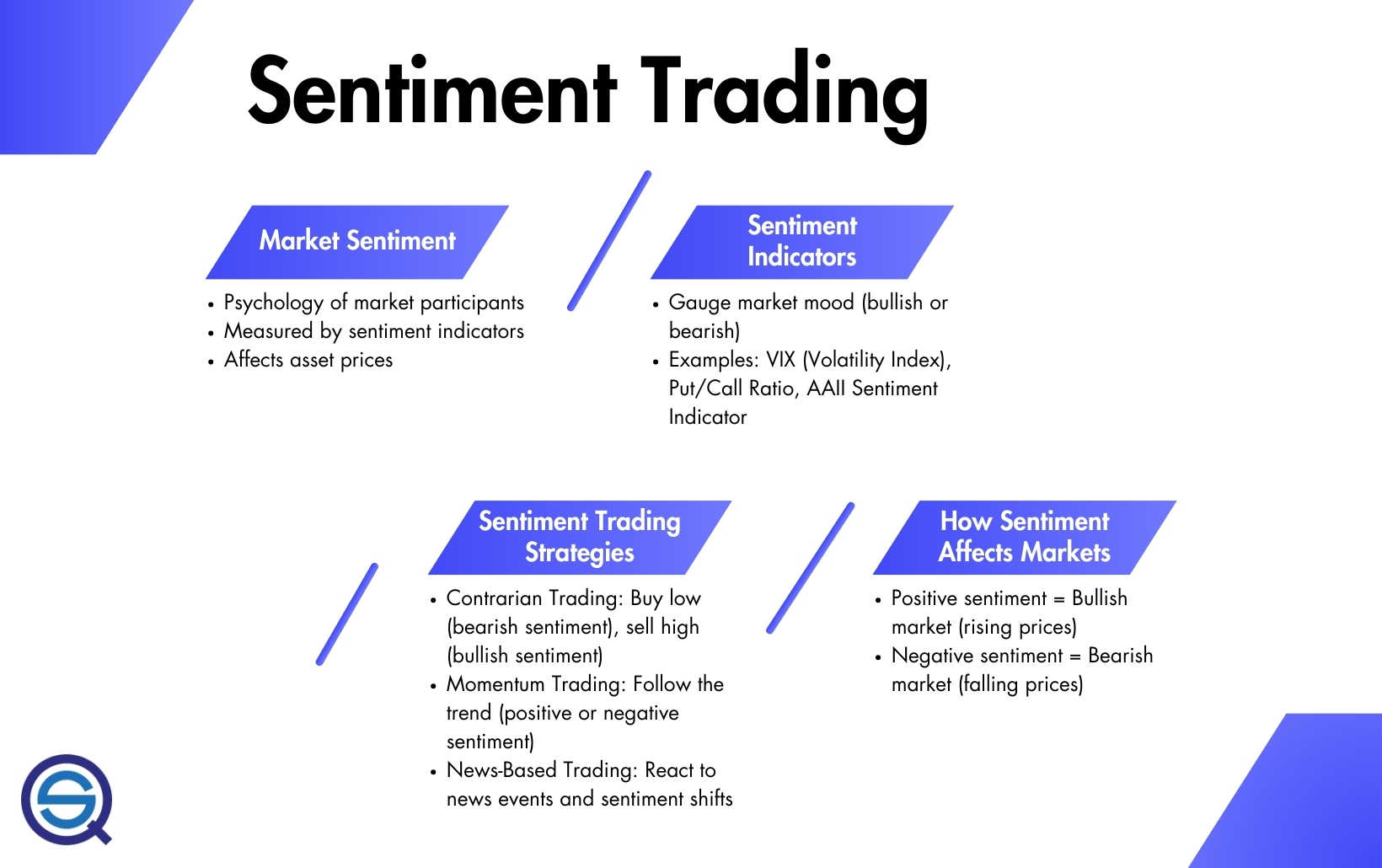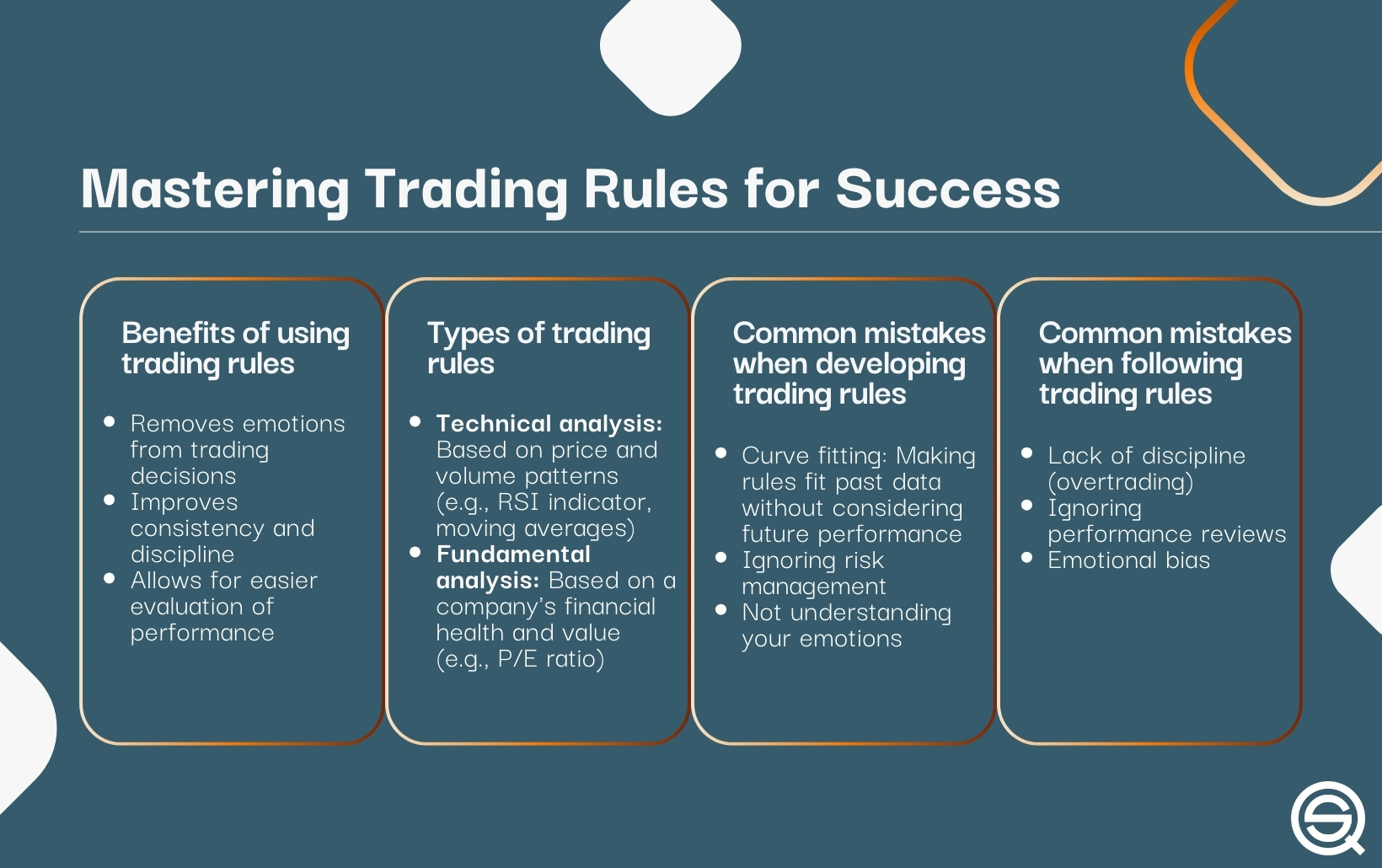Did you know that traders often have more mood swings than a reality TV star? Understanding trader sentiment is crucial for successful day trading, as it reflects the collective emotions and attitudes of market participants. This article by DayTradingBusiness dives deep into the essence of trader sentiment, exploring its definition and the most effective methods to measure it. You'll discover valuable tools for sentiment analysis, the influence of social media and news events, and how to interpret market surveys. We also highlight key indicators, the distinction between bullish and bearish sentiment, and strategies for incorporating sentiment analysis into your trading plan. Plus, learn about common pitfalls and the role of historical data in shaping your trades. Get ready to enhance your trading acumen with insights into how sentiment drives market movements!
What Is Trader Sentiment in Day Trading?
Trader sentiment in day trading refers to the overall attitude or mood of traders toward a particular asset or the market as a whole. It is often measured using indicators like the put-call ratio, market surveys, and social media sentiment analysis. High bullish sentiment may indicate that traders expect prices to rise, while high bearish sentiment suggests they anticipate a decline. Understanding trader sentiment helps day traders make informed decisions about entering or exiting positions based on market psychology.
How Can I Measure Trader Sentiment Effectively?
To measure trader sentiment effectively in day trading, use these methods:
1. Social Media Analysis: Monitor platforms like Twitter and Reddit for real-time sentiment. Look for mentions of stocks and gauge the overall mood—positive, negative, or neutral.
2. News Sentiment: Track financial news outlets for headlines and articles. Use sentiment analysis tools to quantify the sentiment of news related to specific stocks.
3. Market Indicators: Pay attention to the put/call ratio. A high put/call ratio often indicates bearish sentiment, while a low ratio suggests bullish sentiment.
4. Surveys and Polls: Engage with trader communities through surveys to gather direct insights on market sentiment.
5. Technical Analysis: Analyze price action and volume patterns. Rapid price movements can indicate strong sentiment shifts.
6. Sentiment Indexes: Utilize sentiment indexes like the Fear & Greed Index, which aggregates various factors to quantify market sentiment.
By combining these methods, you can gain a comprehensive view of trader sentiment.
What Tools Are Best for Analyzing Trader Sentiment?
The best tools for analyzing trader sentiment in day trading include:
1. Social Media Analytics: Platforms like Twitter and StockTwits provide real-time sentiment analysis based on trader discussions and trends.
2. Sentiment Indicators: Tools such as the Fear & Greed Index and the AAII Sentiment Survey gauge market mood.
3. News Aggregators: Services like Benzinga or Seeking Alpha track news sentiment that can influence trader behavior.
4. Brokerage Platforms: Many brokers, like TD Ameritrade and Interactive Brokers, offer built-in sentiment analysis tools based on client trades.
5. Sentiment Analysis Software: Tools like MarketPsych and Trade Ideas provide advanced sentiment analytics using AI to interpret data.
Using a combination of these tools will give a comprehensive view of trader sentiment.
How Does Trader Sentiment Impact Market Movements?
Trader sentiment significantly impacts market movements by influencing buying and selling behaviors. When sentiment is bullish, traders are more likely to buy, driving prices up. Conversely, bearish sentiment leads to selling, pushing prices down.
Measuring trader sentiment can be done through various indicators like the Commitment of Traders report, sentiment surveys, and social media analysis. High levels of optimism or pessimism often signal potential reversals. For day traders, understanding sentiment helps in timing entries and exits, capitalizing on short-term market fluctuations.
In essence, trader sentiment acts as a barometer for market trends, guiding decisions and shaping price action.
What Indicators Reflect Trader Sentiment?
Trader sentiment can be measured using several key indicators:
1. Market Breadth: The advance-decline line shows the number of stocks advancing versus declining, indicating overall market sentiment.
2. Volume Analysis: Increased trading volume on up days versus down days can reflect bullish sentiment.
3. Put/Call Ratio: A lower ratio suggests bullish sentiment, while a higher ratio indicates bearish sentiment.
4. Fear and Greed Index: This index combines multiple factors to gauge market sentiment, showing extremes of fear or greed.
5. Surveys and Polls: Investor sentiment surveys, like the AAII Sentiment Survey, provide insights into how traders feel about market direction.
6. Social Media Sentiment: Analyzing mentions and sentiment on platforms like Twitter can reveal trader attitudes in real-time.
Use these indicators for a clearer picture of trader sentiment in day trading.
How Can Social Media Influence Trader Sentiment?
Social media influences trader sentiment by shaping perceptions and spreading information quickly. Platforms like Twitter and Reddit can create hype around stocks, affecting buy and sell decisions. Traders often react to trending topics, news, and community discussions, which can lead to rapid price movements. Sentiment analysis tools can gauge emotion in posts to predict market trends. Monitoring social media chatter helps traders gauge market mood and adjust strategies accordingly.
What Role Do News Events Play in Trader Sentiment?

News events significantly influence trader sentiment by shaping expectations and market perceptions. Positive news can boost confidence, leading to increased buying activity, while negative news often triggers fear and selling pressure. Traders closely monitor economic reports, geopolitical developments, and corporate announcements to gauge sentiment shifts. For instance, a strong jobs report might create optimism, prompting traders to enter long positions, whereas disappointing earnings can lead to a bearish outlook. Ultimately, news events serve as catalysts that can rapidly alter sentiment and drive market movements in day trading.
How Do Market Surveys Help Measure Trader Sentiment?
Market surveys help measure trader sentiment by collecting data on traders' opinions, expectations, and behaviors. They reveal how traders feel about market trends, potential price movements, and economic conditions. This information can indicate bullish or bearish sentiment, allowing traders to adjust their strategies accordingly. For example, a survey showing high optimism might suggest a potential price increase, while widespread pessimism could signal a downturn. By analyzing these insights, traders can make informed decisions and anticipate market shifts more effectively.
What Are the Limitations of Measuring Trader Sentiment?
The limitations of measuring trader sentiment in day trading include:
1. Subjectivity: Sentiment analysis can vary widely based on individual interpretation, leading to inconsistent conclusions.
2. Data Quality: The sources of sentiment data (social media, forums) may contain noise or misinformation, skewing results.
3. Timeliness: Sentiment can change rapidly; outdated data may not reflect current market conditions.
4. Market Manipulation: Traders can artificially influence sentiment through coordinated actions or misleading information.
5. Lack of Quantitative Metrics: Sentiment is often qualitative, making it harder to quantify and integrate into trading strategies.
6. Emotional Bias: Traders' emotions can cloud judgment, resulting in poor decision-making despite positive sentiment indicators.
How Can I Incorporate Sentiment Analysis into My Trading Strategy?
To incorporate sentiment analysis into your trading strategy, start by monitoring social media platforms, financial news, and forums for trader sentiment. Use sentiment analysis tools or APIs to quantify positive and negative sentiments around specific stocks or the market overall.
Integrate this data with your technical analysis; for example, if sentiment is overwhelmingly bullish but technical indicators show overbought conditions, consider a contrarian approach.
Additionally, track sentiment changes in real-time to make quick trading decisions. Combine sentiment insights with volume analysis to confirm trends. Lastly, backtest your strategy using historical sentiment data to assess its effectiveness before live trading.
Learn about How to Incorporate Order Flow Analysis into Your Trading Routine
What Is the Difference Between Bullish and Bearish Sentiment?

Bullish sentiment indicates that traders expect prices to rise, leading to increased buying activity. In contrast, bearish sentiment means traders anticipate falling prices, resulting in selling pressure. Essentially, bullishness reflects optimism about market trends, while bearishness signifies pessimism. Understanding these sentiments helps day traders gauge market movements and make informed decisions.
How Can I Use Sentiment Data to Predict Price Trends?
To use sentiment data for predicting price trends in day trading, follow these steps:
1. Collect Sentiment Data: Use social media, news articles, and trading forums to gauge trader sentiment. Tools like sentiment analysis software can help quantify emotions.
2. Analyze Correlations: Look for patterns between sentiment shifts and price movements. For instance, a surge in positive sentiment might precede a price increase.
3. Integrate with Technical Indicators: Combine sentiment data with technical indicators like moving averages or RSI to confirm trends.
4. Monitor Volume: High trading volume alongside positive sentiment can signal stronger price movements.
5. Adjust Strategies: Use sentiment data to inform buy/sell decisions. If sentiment turns negative but technical indicators remain strong, consider adjusting your trading strategy to mitigate risk.
6. Backtest: Validate your approach by backtesting against historical data to assess the effectiveness of sentiment in predicting price trends.
By applying these methods, you can enhance your day trading strategy using sentiment data effectively.
Learn about How to Use Sentiment Data to Improve Day Trading Performance
What Are Common Mistakes in Analyzing Trader Sentiment?

Common mistakes in analyzing trader sentiment include relying too heavily on social media trends without verifying data, misinterpreting sentiment indicators like the put/call ratio, and neglecting to consider market context. Traders often overlook the psychological factors that influence sentiment, such as fear and greed. Additionally, failing to combine sentiment analysis with technical and fundamental analysis can lead to skewed conclusions. Another mistake is not adjusting sentiment indicators for various market conditions, leading to misreads during volatile periods.
How Does Sentiment Affect Volatility in Day Trading?
Sentiment affects volatility in day trading by influencing trader behavior. When traders are optimistic, buying pressure increases, leading to price spikes. Conversely, negative sentiment can trigger selling, causing sharp declines. High sentiment often correlates with increased trading volume, amplifying volatility. Tools like social media analysis, news sentiment, and market surveys help measure trader sentiment, providing insights into potential price movements. Monitoring these indicators can help traders anticipate shifts in volatility and make informed decisions.
Learn about How Do Market Makers and Liquidity Providers Affect Day Trading?
What Resources Are Available for Tracking Trader Sentiment?
To track trader sentiment in day trading, use these resources:
1. Sentiment Indicators: Tools like the AAII Sentiment Survey and the Fear & Greed Index provide insights into market sentiment.
2. Social Media Platforms: Twitter and Reddit can reveal real-time trader opinions and trends.
3. Trading Platforms: Many platforms offer built-in sentiment analysis tools, such as Thinkorswim and TradingView.
4. News Aggregators: Websites like Benzinga and Seeking Alpha often publish sentiment analysis articles.
5. Brokerage Reports: Some brokerages provide daily sentiment reports based on their clients' positions.
Utilizing these resources can help you gauge market sentiment effectively.
How Can Historical Sentiment Data Inform Future Trades?
Historical sentiment data can guide future trades by revealing patterns in trader behavior. Analyzing past sentiment trends helps identify bullish or bearish market conditions. For example, if strong positive sentiment preceded price increases, similar future sentiment could indicate potential gains. Traders can utilize sentiment indicators like social media analysis or news sentiment to predict market movements. By understanding how sentiment influenced past trades, day traders can make more informed decisions, improving their strategy and timing.
Conclusion about Measuring Trader Sentiment in Day Trading
Incorporating trader sentiment into your day trading strategy is crucial for understanding market dynamics and making informed decisions. While various tools and indicators can help gauge sentiment, it's essential to recognize their limitations and avoid common pitfalls. By leveraging resources and historical data, you can enhance your trading approach and potentially predict price trends more accurately. For deeper insights and guidance on effectively measuring and utilizing trader sentiment, DayTradingBusiness is here to support your trading journey.